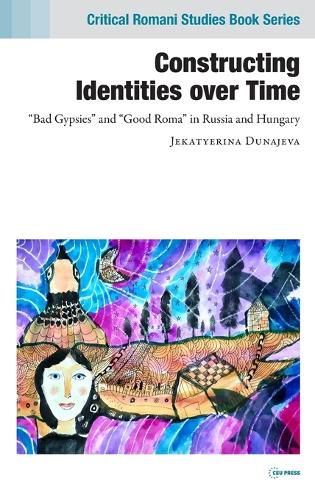Readings Newsletter
Become a Readings Member to make your shopping experience even easier.
Sign in or sign up for free!
You’re not far away from qualifying for FREE standard shipping within Australia
You’ve qualified for FREE standard shipping within Australia
The cart is loading…






Jekatyerina Dunajeva explores how two dominant stereotypes- bad Gypsies and good Roma -took hold in formal and informal educational institutions in Russia and Hungary. She shows that over centuries Gypsies came to be associated with criminality, lack of education, and backwardness. The second notion, of proud, empowered, and educated Roma, is a more recent development.
By identifying five historical phases-pre-modern, early-modern, early and ripe communism, and neomodern nation-building-the book captures crucial legacies that deepen social divisions and normalize the constructed group images. The analysis of the state-managed Roma identity project in the brief korenizatsija program for the integration of non-Russian nationalities into the Soviet civil service in the 1920s is particularly revealing, while the critique of contemporary endeavors is a valuable resource for policy makers and civic activists alike.
The top-down view is complemented with the bottom-up attention to everyday Roma voices. Personal stories reveal how identities operate in daily life, as Dunajeva brings out hidden narratives and subaltern discourse. Her handling of fieldwork and self-reflexivity is a model of sensitive research with vulnerable groups.
$9.00 standard shipping within Australia
FREE standard shipping within Australia for orders over $100.00
Express & International shipping calculated at checkout
Jekatyerina Dunajeva explores how two dominant stereotypes- bad Gypsies and good Roma -took hold in formal and informal educational institutions in Russia and Hungary. She shows that over centuries Gypsies came to be associated with criminality, lack of education, and backwardness. The second notion, of proud, empowered, and educated Roma, is a more recent development.
By identifying five historical phases-pre-modern, early-modern, early and ripe communism, and neomodern nation-building-the book captures crucial legacies that deepen social divisions and normalize the constructed group images. The analysis of the state-managed Roma identity project in the brief korenizatsija program for the integration of non-Russian nationalities into the Soviet civil service in the 1920s is particularly revealing, while the critique of contemporary endeavors is a valuable resource for policy makers and civic activists alike.
The top-down view is complemented with the bottom-up attention to everyday Roma voices. Personal stories reveal how identities operate in daily life, as Dunajeva brings out hidden narratives and subaltern discourse. Her handling of fieldwork and self-reflexivity is a model of sensitive research with vulnerable groups.